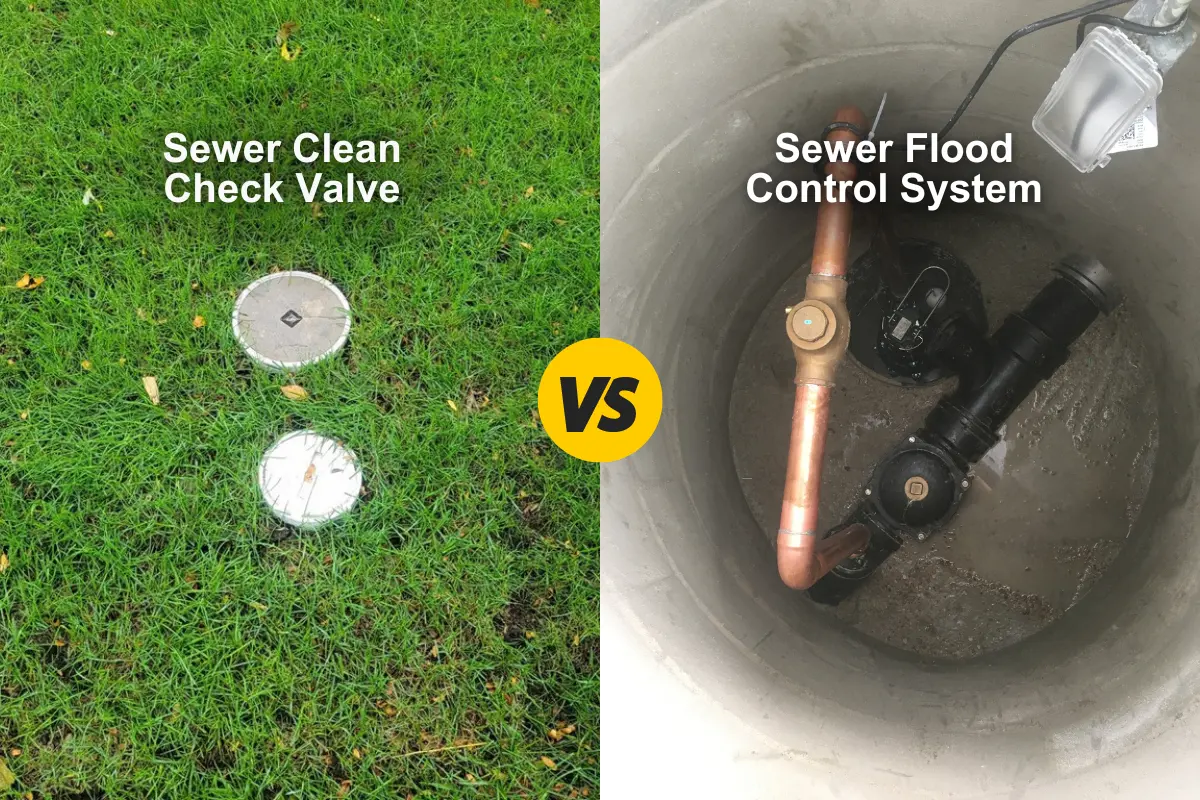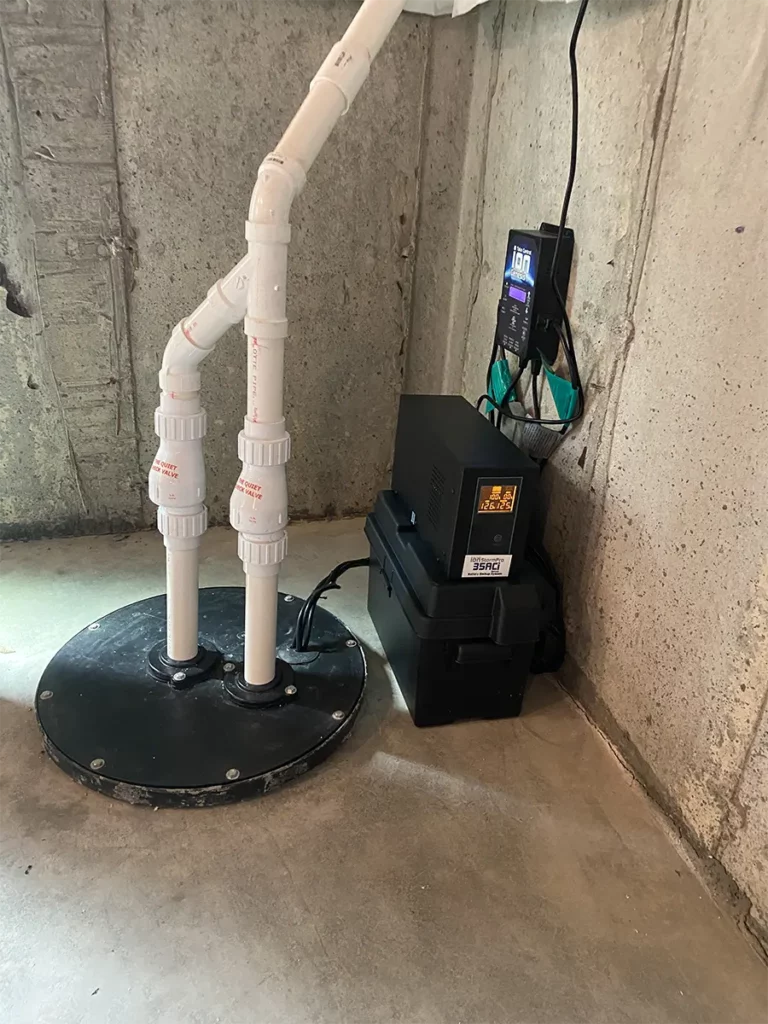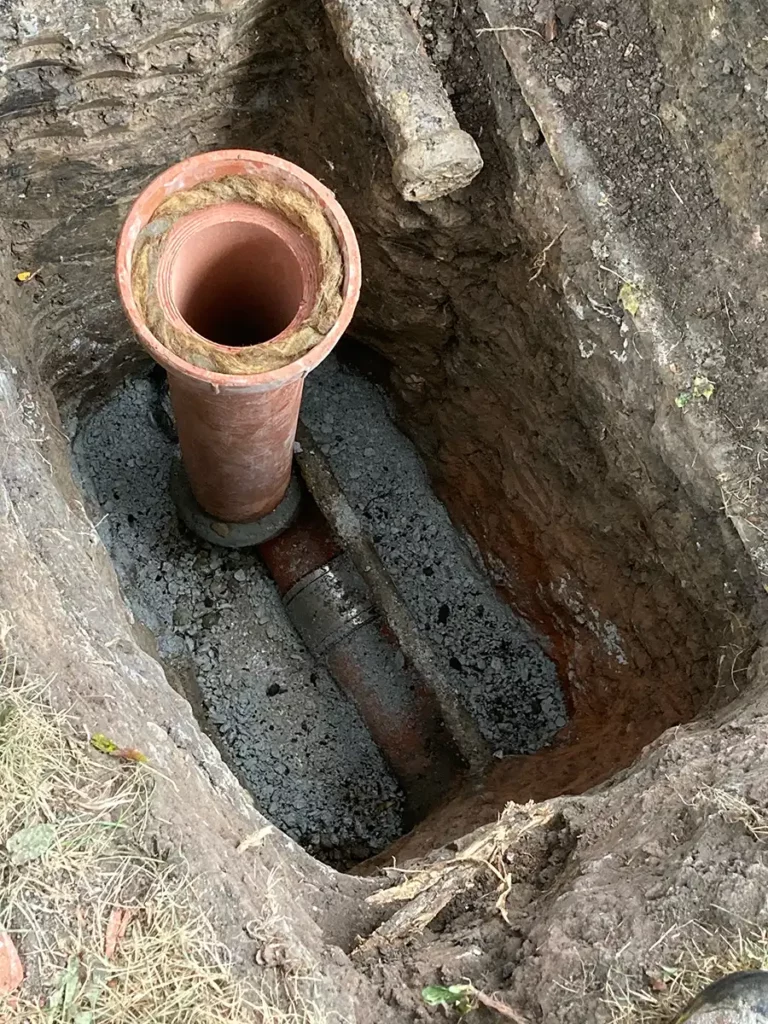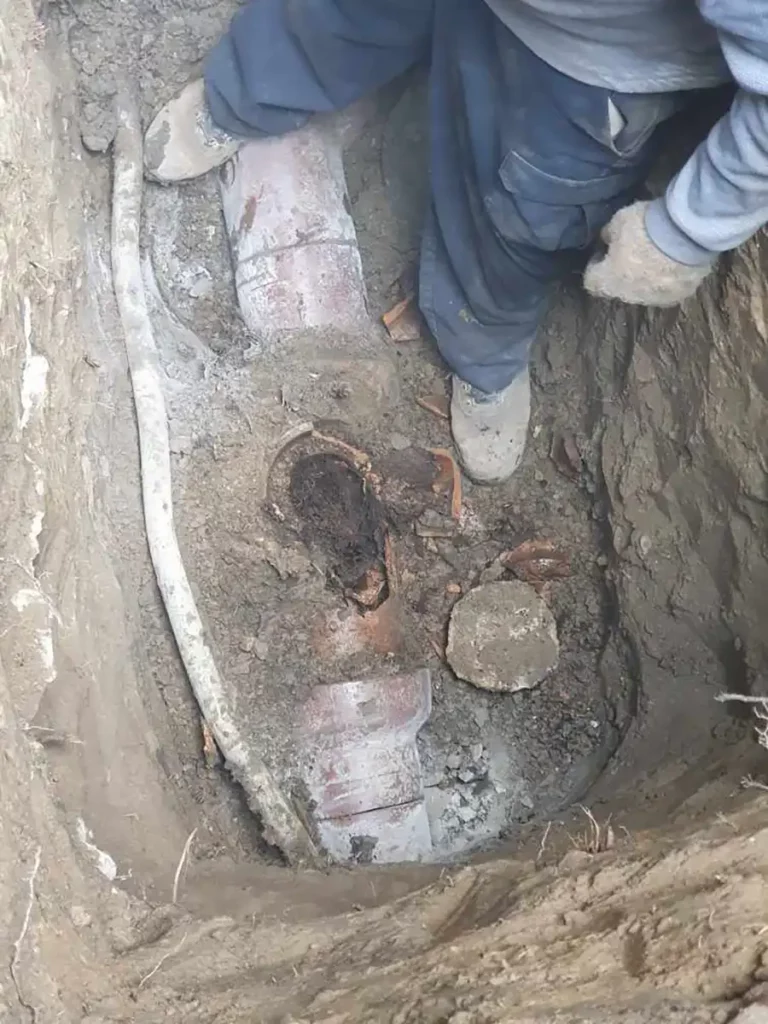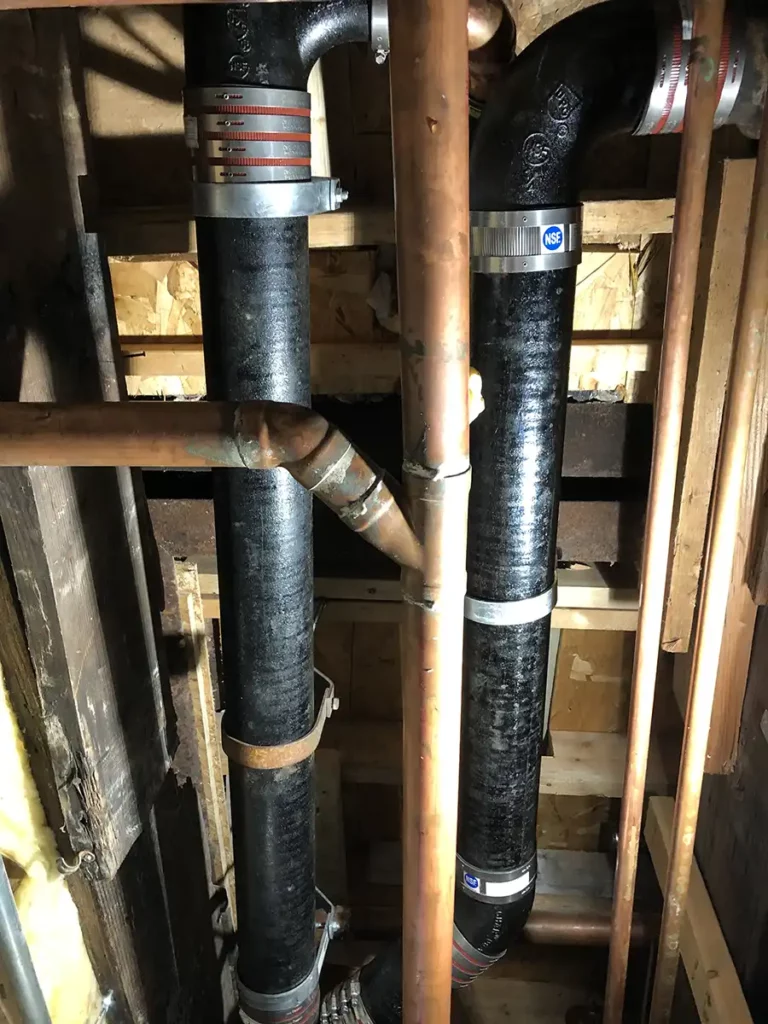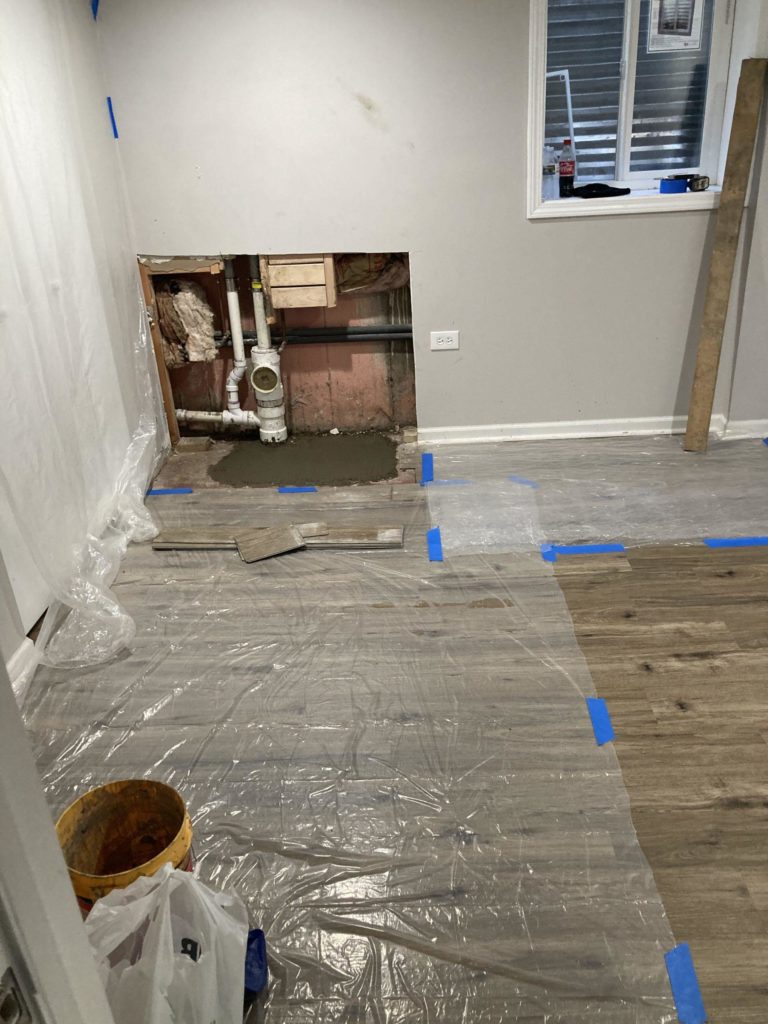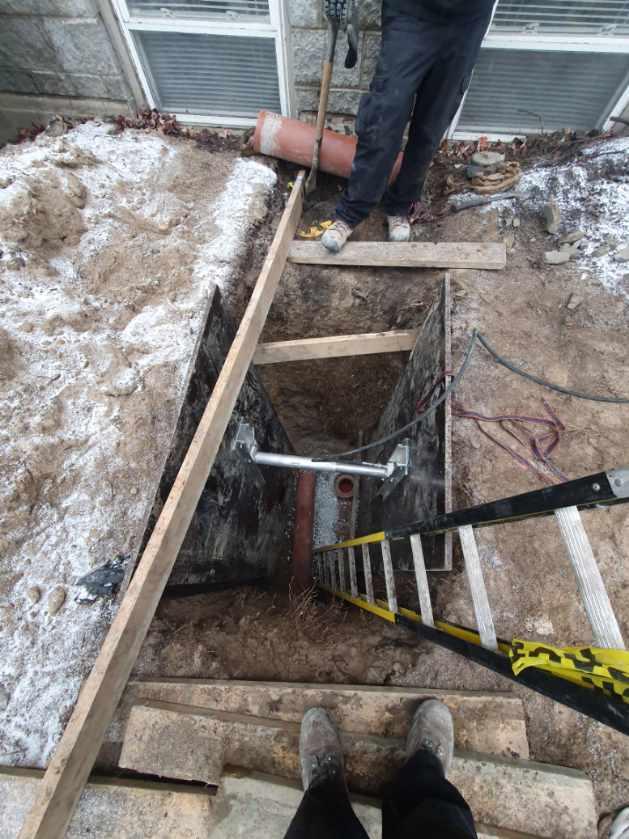Comparing Solutions: Sewer Clean Check vs Sewer Flood Control System Explained
Homeowners often face a critical choice in sewer backup protection and whether to implement a sewer clean check or a sewer flood control system.
In this article, we will discuss sewer clean check systems versus sewer flood control systems to cut through the confusion, offering a direct comparison that helps you understand each system’s function and decide on the best protection for your residence.
Key Takeaways
- Sewer clean check valves provide an economical solution for preventing sewer backflow, while full sewer flood control systems offer a more comprehensive, long-term protection; that allows continuous water usage during municipal sewer system overloads.
- Installing a sewer clean check valve is simpler and less time-consuming compared to a full sewer flood control system. This demands a detailed assessment, professional installation, necessary permits, and adherence to building codes, but can offer more extensive protection for your property.
- An overhead sewer system is the newest type of sewer system that has replaced the traditional gravity sewers in basements. Overhead sewer systems include crucial components like ejector pumps to transport wastewater effectively, thereby preventing sewer backflows and basement flooding.
Understanding Sewer Backflow Prevention
Sewer backup is a growing concern, especially in cities experiencing extreme weather events. As municipal sewer systems get overwhelmed, there’s a high chance of wastewater entering homes through the sewage system. It can happen due to heavy rain, snowmelt, or blockages caused by tree roots or plumbing deterioration. Therefore, having a robust sewer backflow preventer is no longer an option, but a necessity, to protect homes from such unfortunate incidents.
To help homeowners navigate through this challenge, two primary methods of sewer backup have emerged – sewer clean check valves and full sewer flood control systems. Sewer clean check valves are a cost-effective solution designed to handle temporary sewage backups. Full sewer flood control systems provide a comprehensive shield against prolonged sewer overflows, ensuring uninterrupted water usage in homes.
The Basics of Sewer Clean Check Valves
A sewer clean check valve, also known as a backwater valve or backflow check valve, is designed to prevent sewage from flowing back into a building, especially those with basements prone to flooding during sewer backflow.
The heart of this mechanism is a flapper. Under normal situations, this flapper stays closed, only opening to allow wastewater to exit and sewer vapors to be released. However, when a sewer overflow happens, this flapper is the protection, blocking sewage from entering back into the property.
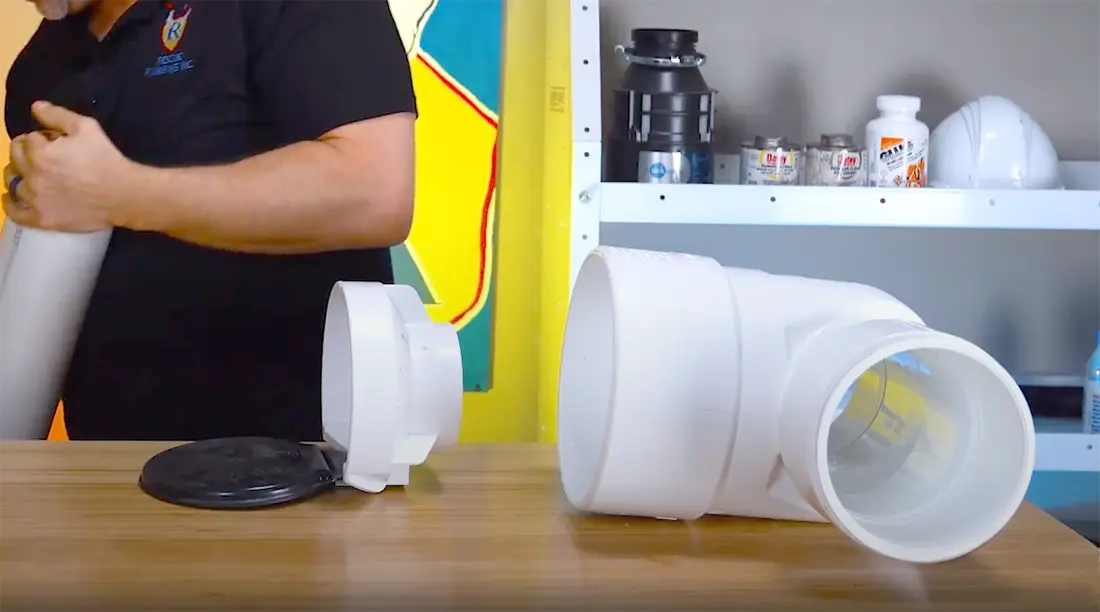
The clean check valve offers a dependable, cost-effective defense against temporary sewage backups. Its compact design makes it a popular choice among homeowners. But keep in mind it only allows limited water usage indoors until the overflow subsides.
The Full Sewer Flood Control System Advantage
If you’re a homeowner in search of a more all-encompassing solution, consider a full sewer flood control system. This system is designed to minimize the risk of home and basement damage from various flooding sources, including sewer backflow. It consists of several components such as:
- Lift stations
- Sump pumps
- Sewer backflow valves
- Overhead sewer with strong protection
- Additional support systems like backup sump pumps and French drains
A key element in the full sewer flood control system is the automatic floodgate valve. It features a specialty brass nickel combination gate flapper that effectively prevents wastewater backflow over extended periods.
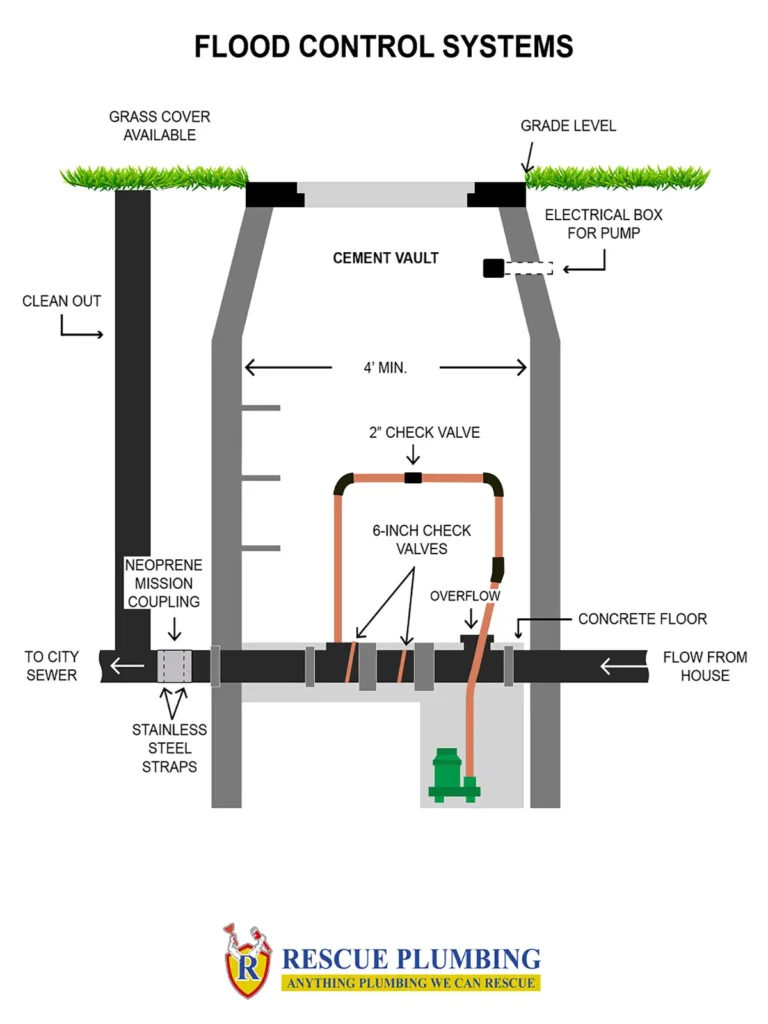
A benefit of a complete sewer flood control system is its ability to maintain continuous water use in the home, even during city sewer system overloads.
Essential Components of an Overhead Sewer System
An overhead sewer system is the newest type of sewer system that has replaced the traditional gravity sewers in basements. These newer sewer systems prevent flooding because this system raises the sewer pipe above ground level, safeguarding against backups that occur when the city sewer is overwhelmed. It comprises several essential components, including lift stations and catch basins, which play a significant role in preventing sewer backflows.
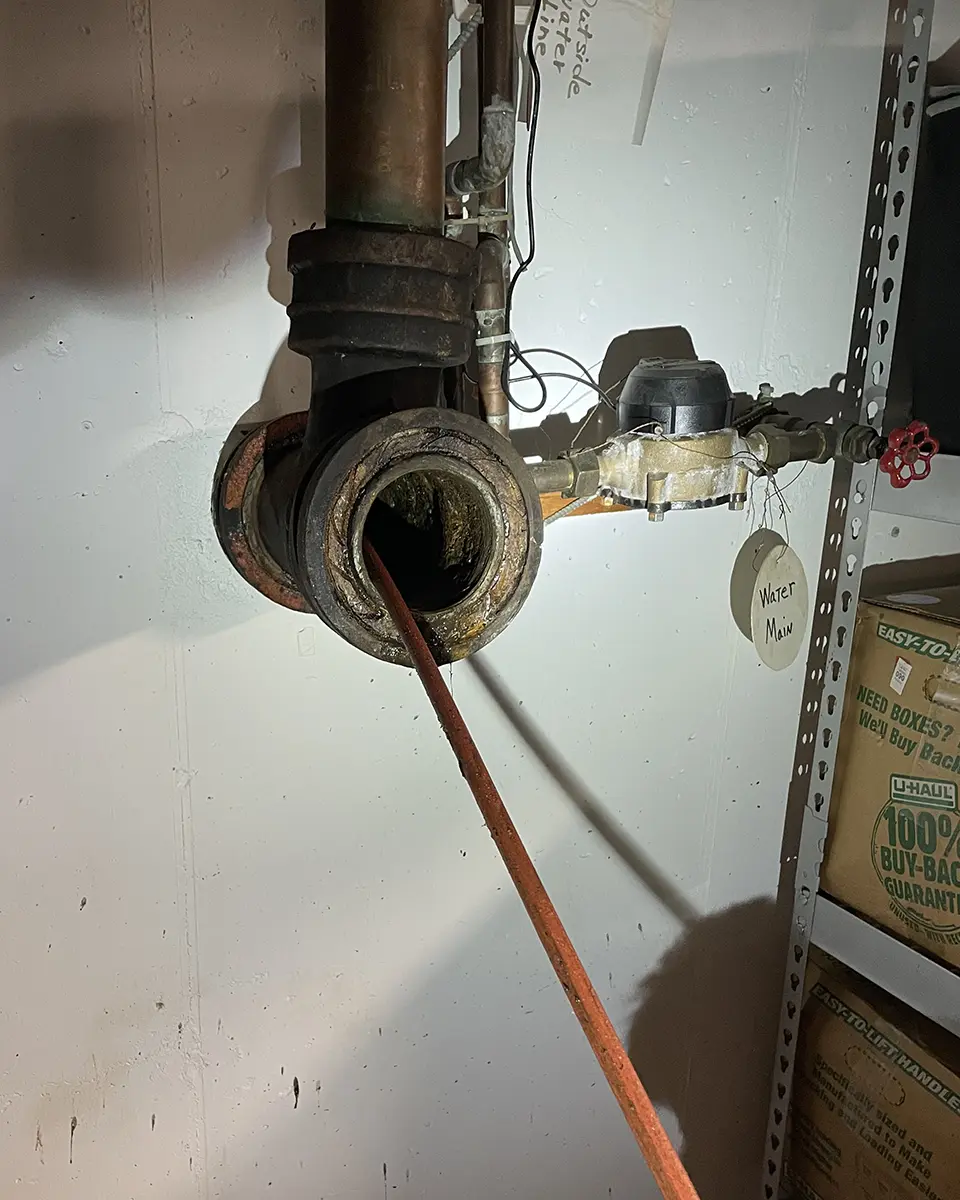
In an overhead sewer system, lift stations play a vital role. They help move wastewater from lower elevations to higher ones, counteracting situations where the natural gradient doesn’t allow for free flow. In addition, catch basins serve as a part of the overhead sewer system’s flood control strategy by managing surface water, which reduces the chances of overland flooding.
Having an overhead sewer system is typically a reliable safeguard against flooding through the sewer. However, the recent surge in extreme weather events, with heavy rainfall within a short period, has overwhelmed even these systems. In Chicago last year, numerous residents on the Northwest side reported experiencing flooding through their sewers despite having an overhead system in place.
The Role of the Ejector Pump
An ejector pump plays a critical role in an overhead sewer system. They lift sewage from basement-level fixtures to the overhead sewer line, effectively preventing sewer backflows.
During the upgrade to an overhead sewer system, basement plumbing, including fixtures, laundry, and drains, is redirected to an ejector pit located on the basement floor, near the basement walls. This pit houses the pump, which forces the sewage overhead, ensuring it doesn’t flow back into your home while keeping your basement dry.
Incorporating a Sump Pump
The sump pump is an essential part of an overhead sewer system. It manages water at the basement level, protecting basement walls and foundations from flooding. The sump pump is designed to automatically activate and remove accumulated water, directing it away from the basement floor to prevent water damage and flooding.
In addition to the primary sump pump, installing a secondary or backup sump pump is also recommended. It keeps the overhead sewer system operational during power outages and prevents potential sump pump or float switch failures.
Comparing Clean Check Valve vs Flood Control System
Installing a clean check valve involves locating an accessible section of the main sewer line, ensuring proper clearance, and securing the valve. The process usually takes at least a full day, depending on the size of the excavation crew.
The decision about whether to install a clean check valve or a full flood control system typically hinges on the installation’s complexity. While a clean check valve is relatively simple and quick to install, a flood control system involves a more detailed process.
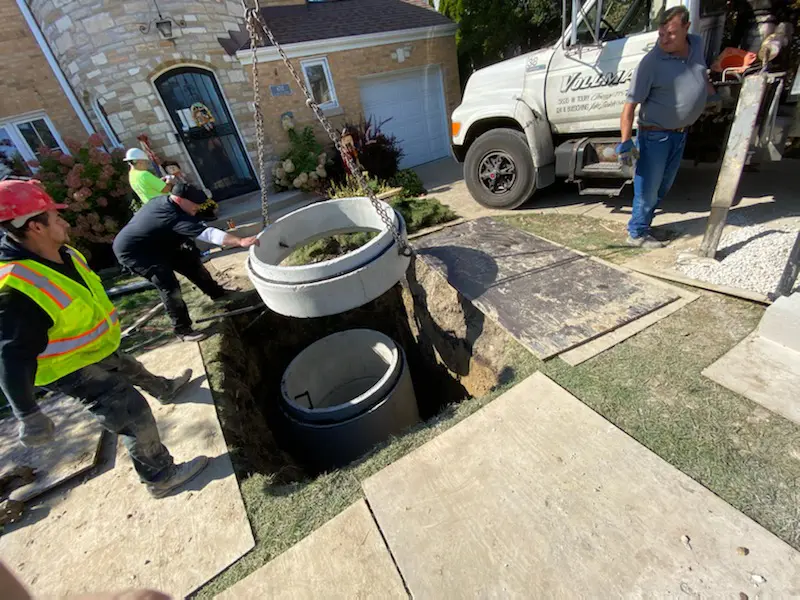
On the other hand, installing a flood control system requires:
- Professional consultation
- Hiring experienced installers
- Obtaining necessary permits
- Source mapping for potential floods
- System design based on property layout
Quick Setup: Installing Clean Check Valve
The sewer line is where a clean check valve is directly installed. Thanks to its less complex nature, the installation process for a clean check valve is much quicker compared to comprehensive flood control systems.
Once installed, a clean check valve provides immediate protection against sewage backflow, offering you peace of mind and ensuring clean water in your home.
Planning for Flood Control Systems
To plan for a flood control system, a deeper comprehension of the property’s layout and potential flood risks is needed and often requires a professional assessment. Depending on the property’s specific needs, the flood control system can include a mix of:
- Barriers
- Sump pumps
- Backwater valves
- Other floodproofing measures
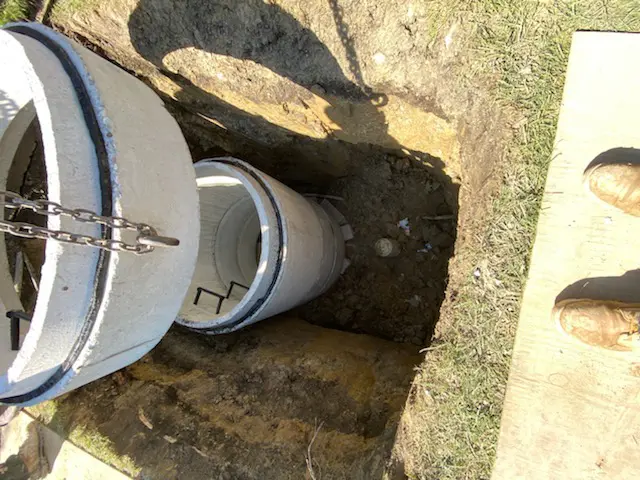
Before the installation begins, there’s also a need to coordinate with local building authorities to obtain permits and ensure the project adheres to building codes. This could affect the project’s timeline.
Despite the complexities, the installation of a full sewer flood control system is a worthwhile investment for those who want comprehensive protection against sewer backflows.
Maintenance Ensures System Integrity
Ensuring the effectiveness in preventing flooding and keeping the basement dry, just like any other home system, both clean check valves and flood control systems need regular maintenance. It is essential to schedule annual maintenance for clean check valves and semi-annual or annual servicing for flood control systems to maintain proper basement waterproofing.
Regular maintenance not only ensures the longevity of these systems but also prevents unfortunate incidents caused by system failures.
Yearly Clean Check Valve Servicing
To maintain their efficiency and prevent sewer backflow, sewer check valves require annual servicing. The maintenance process includes:
- Inspecting for o-ring corrosion
- Cleaning the valve to ensure the flapper closes fully
- Regular inspection of the flapper, checking for wear, and confirming it forms a tight seal
Additionally, the hinge mechanism should also be annually inspected for signs of corrosion or other buildups that may impede its operation.
Keeping Your Flood Control Systems Operational
Regular maintenance and inspections are necessary to keep a flood control system operational. These need to be carried out by professionals for optimal performance and reliability. The different components of a flood control system, such as pumps, need to be checked and maintained regularly to remain operational.
Electrical components, such as alarms and control panels, should also be inspected during maintenance checks to avoid system malfunctions.
When to Choose Which System
Several factors determine the choice between a clean check valve and a full flood control system. If you live in areas with frequent natural flooding, a full flood control system that includes a robust sump pump is strongly recommended to prevent sewage backup during heavy rainfall. But the choice isn’t always clear-cut. Factors such as the size of your home, its location, and the type of foundation can influence the choice of the system.
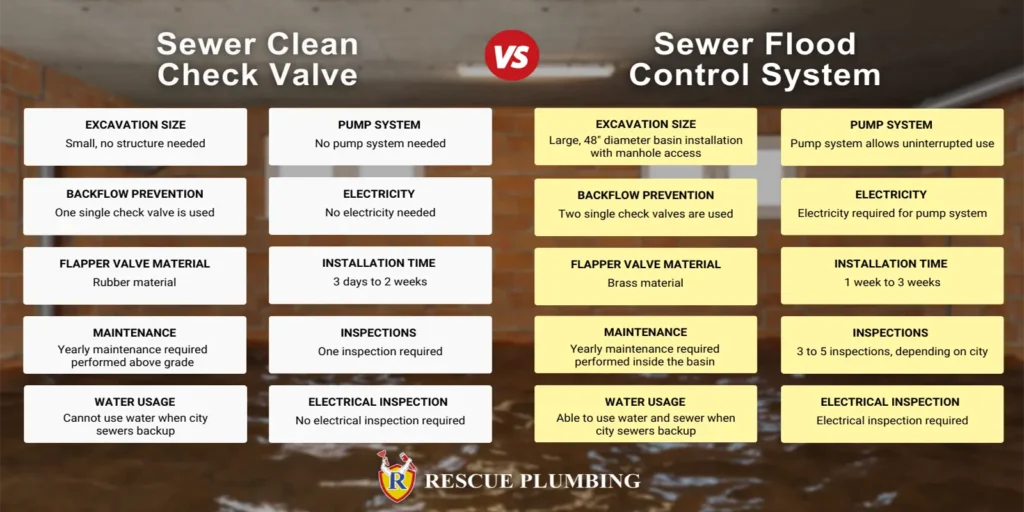
For a well-informed decision, look no further than Rescue Plumbing’s expert advice. Our professionals will help you choose the perfect flood control system, tailored to your home’s size, location, and foundation type.
Cost Considerations and Investment in Safety
Although both a clean check valve and a flood control system offer protection against sewer backflows, they come at different costs. A typical sewer clean check valve installation costs between $6,000.00 and $11,000.00 depending on the depth and location of the sewer line. In contrast, installing a full sewer flood control system typically starts around $11,000.00 and increases depending on depth and location.
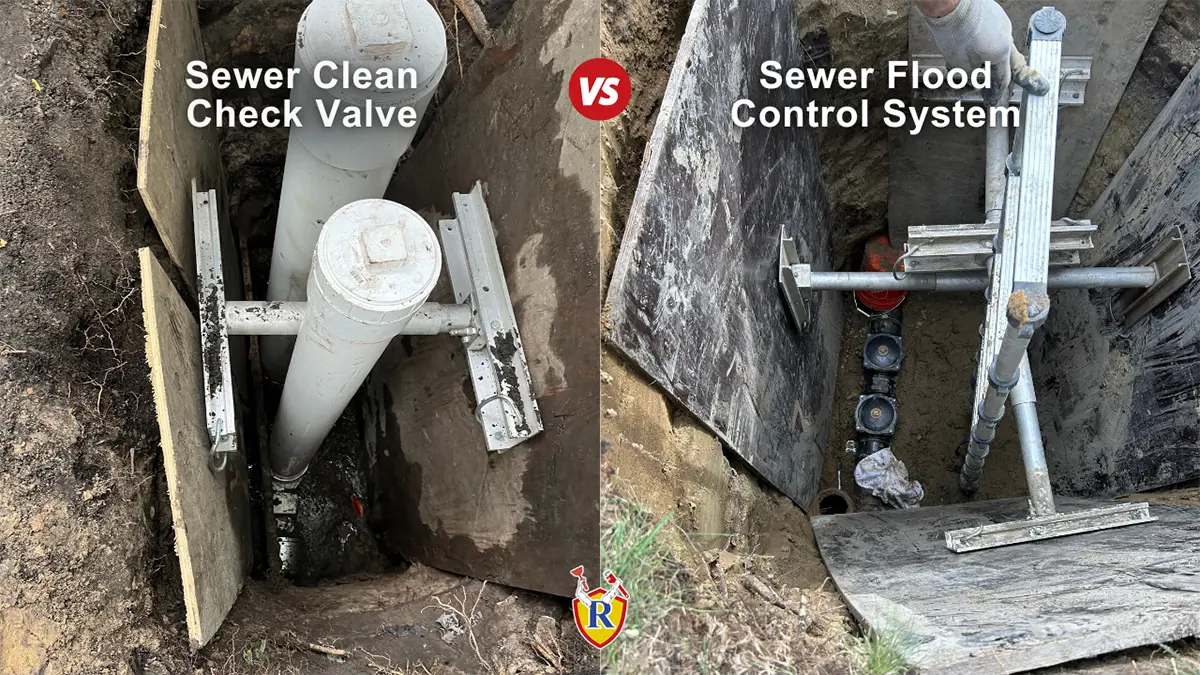
The cost to install an overhead sewer system usually ranges from $20,000 to $50,000, with varying factors such as house size and installation complexity. However, it’s crucial to remember these are more than just costs; they are investments in safety.
Get Professional Assistance from Rescue Plumbing
Professional assistance can streamline the process, whether you’re considering a clean check valve or a full flood control system. Rescue Plumbing’s licensed plumbers have years of hands-on experience in installing sewer backflow prevention options. We provide specialized installations for Chicagoland homes to safeguard against sewer backups, including options such as check valve systems and overhead sewer systems.
At Rescue Plumbing, we offer:
- 24/7 emergency services for urgent plumbing issues
- Easily accessible locations in the Chicagoland area and surrounding suburbs
- Free onsite verbal estimates to understand the potential costs and procedures involved in protecting your property from future sewer floods
Summary
We’ve covered a lot of ground – from understanding sewer backflow prevention and exploring the basics of clean check valves and full flood control systems to discussing the essential components of an overhead sewer system.
Additionally, we have compared the installation processes of these systems, discussed the importance of regular maintenance, and offered expert advice on choosing the appropriate system. Lastly, we’ve considered the costs involved and highlighted the importance of getting professional assistance.
The key takeaway is regardless of the system you choose – a clean check valve or a full flood control system – it’s an investment in safety, peace of mind, and the long-term protection of your home. Make sure to consult with professionals when deciding the best system for your home, and remember – prevention is always better than cure.

